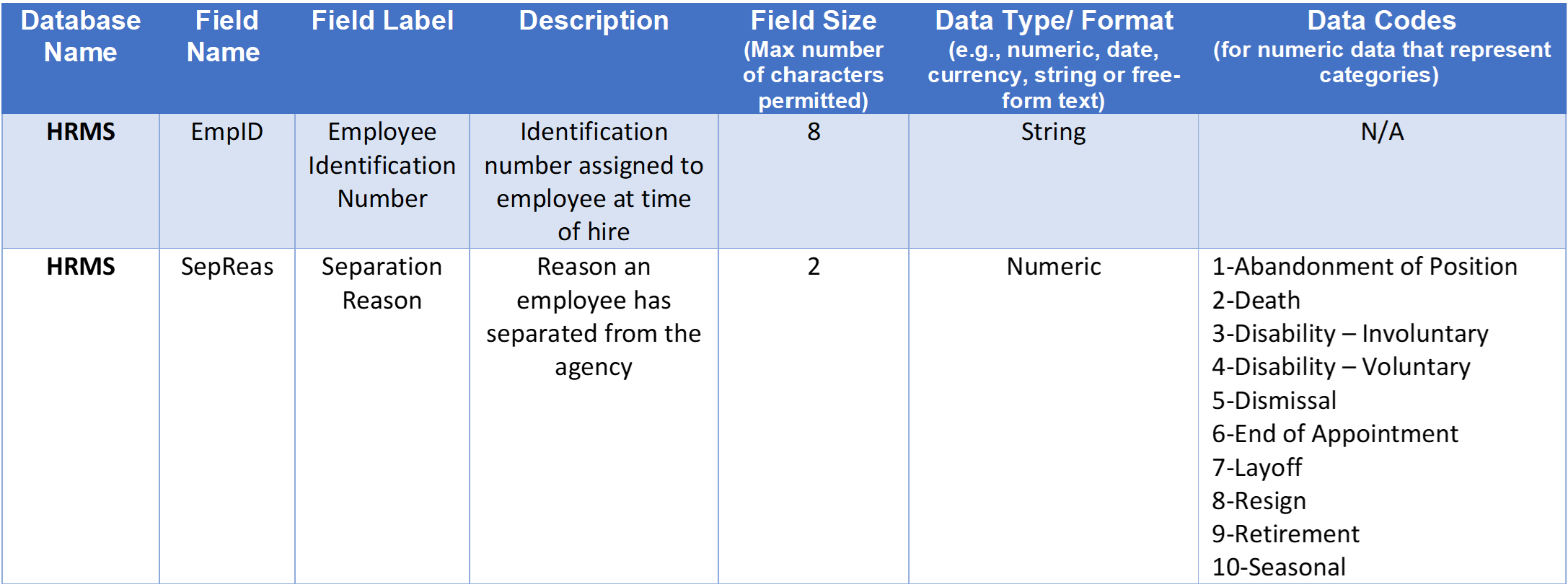Introduction to Data Dictionaries
Are you interested in exploring how to leverage the data necessary to examine and address child welfare workforce challenges in your agency? If so, you may consider developing and using a human resources data dictionary to help guide your work. A data dictionary is a collection of detailed information about the content and structure of data in one or more databases. This descriptive information is often called metadata (i.e., data about data). Other terms used to describe data dictionaries include data definition matrix, metadata repository, design dictionary, and business glossary. You also might see other variations of these terms, further distinctions noted between these terms, or other terms used. Data dictionaries can help you understand what data are available in your system, how those data are organized, and how the various data elements relate to each other. This knowledge can help you determine how to slice and dice your data in meaningful ways, which can lead to important insights about your workforce.
So what exactly is in a data dictionary? At the very least, a data dictionary should provide the name and operational definition of each data element. It may also include other detailed properties of the data elements such as their location (e.g., the database it is stored in), format (e.g., numeric, date, currency, string or free-form text), field size, and any applicable codes. Please see the image below for a sample; in this image, the bolded column headings provide examples of possible elements to include in an HR data dictionary and the rows represent hypothetical data that could be entered.
Developing and using a high-quality data dictionary can yield a number of benefits for agencies. For example, having a data dictionary can facilitate understanding about what data are available and how they are organized. It can also promote standardization by documenting common data structures and providing a common vocabulary for discussing specific data elements. When shared between departments, a data dictionary can also help to ensure that the meaning, relevance, and quality of data elements are the same for all users. Finally, data dictionaries can assist agencies in planning data collection, project development, and other collaborative efforts by providing a visual representation of the data that can be explored.
